French exhibition highlights the flourishing of art and spectacular craftsmanship of the Tang Dynasty 'golden age', Deng Zhangyu reports.
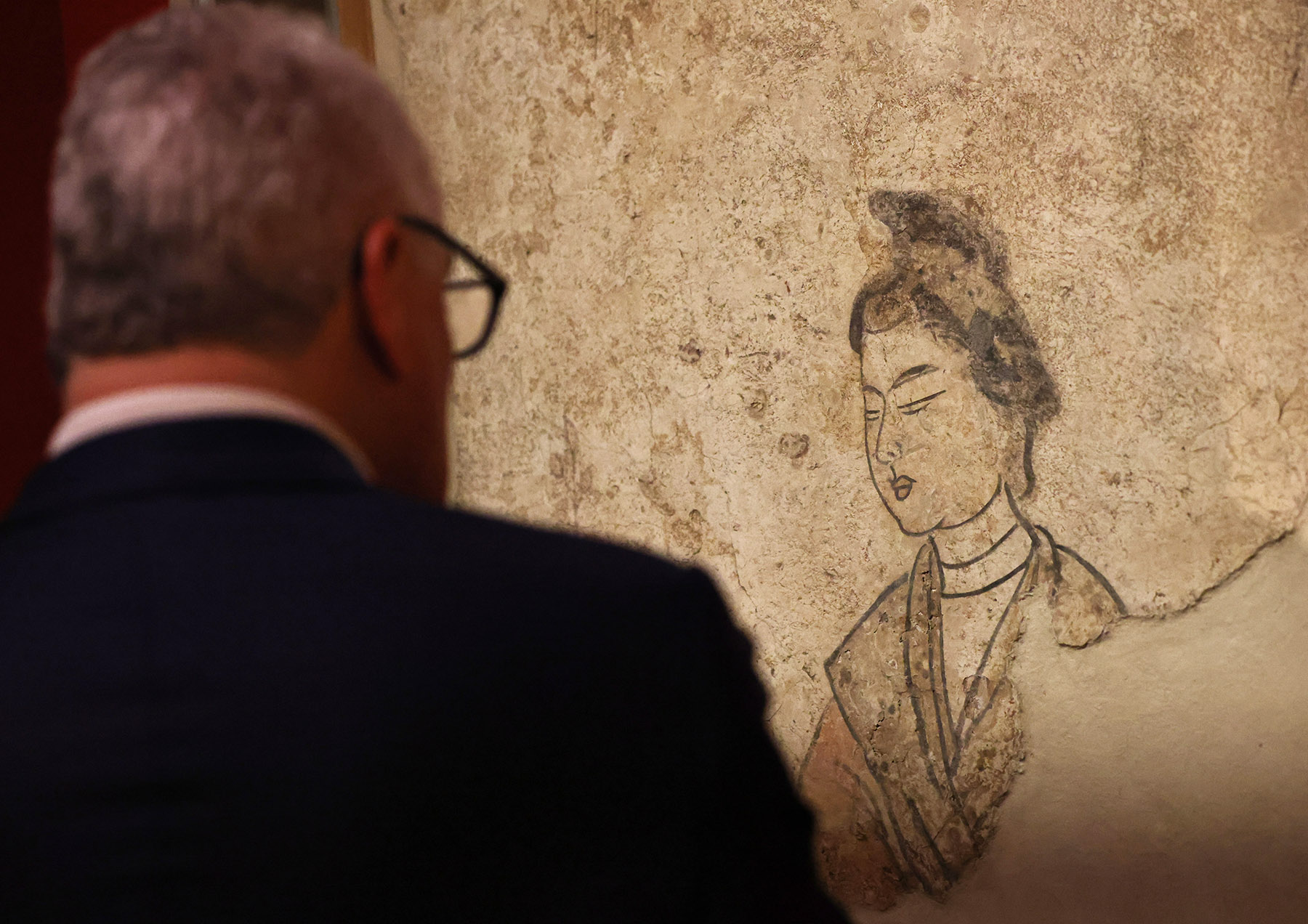
With the rhythmic beat of drums echoing through the air, the city gates slowly open. The streets, flanked by shops, buzz with activity as vendors call out their wares. Merchants, craftsmen, musicians, artists and scholars from around the world gather here to exchange ideas and goods.
Welcome to the ancient capital of Chang'an, a cosmopolitan hub from a millennium ago, where the splendor of the Tang Dynasty (618-907) has been vividly brought to life.
Tang China — A Cosmopolitan Dynasty (7th-10th Century), at the Guimet National Museum of Asian Arts in Paris offers visitors a rare and captivating glimpse into the Tang Dynasty, often heralded as a "golden age" in China's history. This era, marked by a flourishing of art, poetry and craftsmanship, also showcased a dynamic exchange with the wider world through the ancient Silk Road.
READ MORE: Exhibition highlights artifacts from key heritage sites
Huei-Chung Tsao, co-curator of the show from the Guimet museum, says that the exhibition meets the highest standards and can be considered a once-in-a-decade event.
It features 207 rare cultural relics from 32 museums and cultural institutions across China.
Many of these pieces are being presented outside of China for the first time, and some are the must-see treasures from the lending museums' collections. It also includes antiques uncovered from recent archaeological excavations.
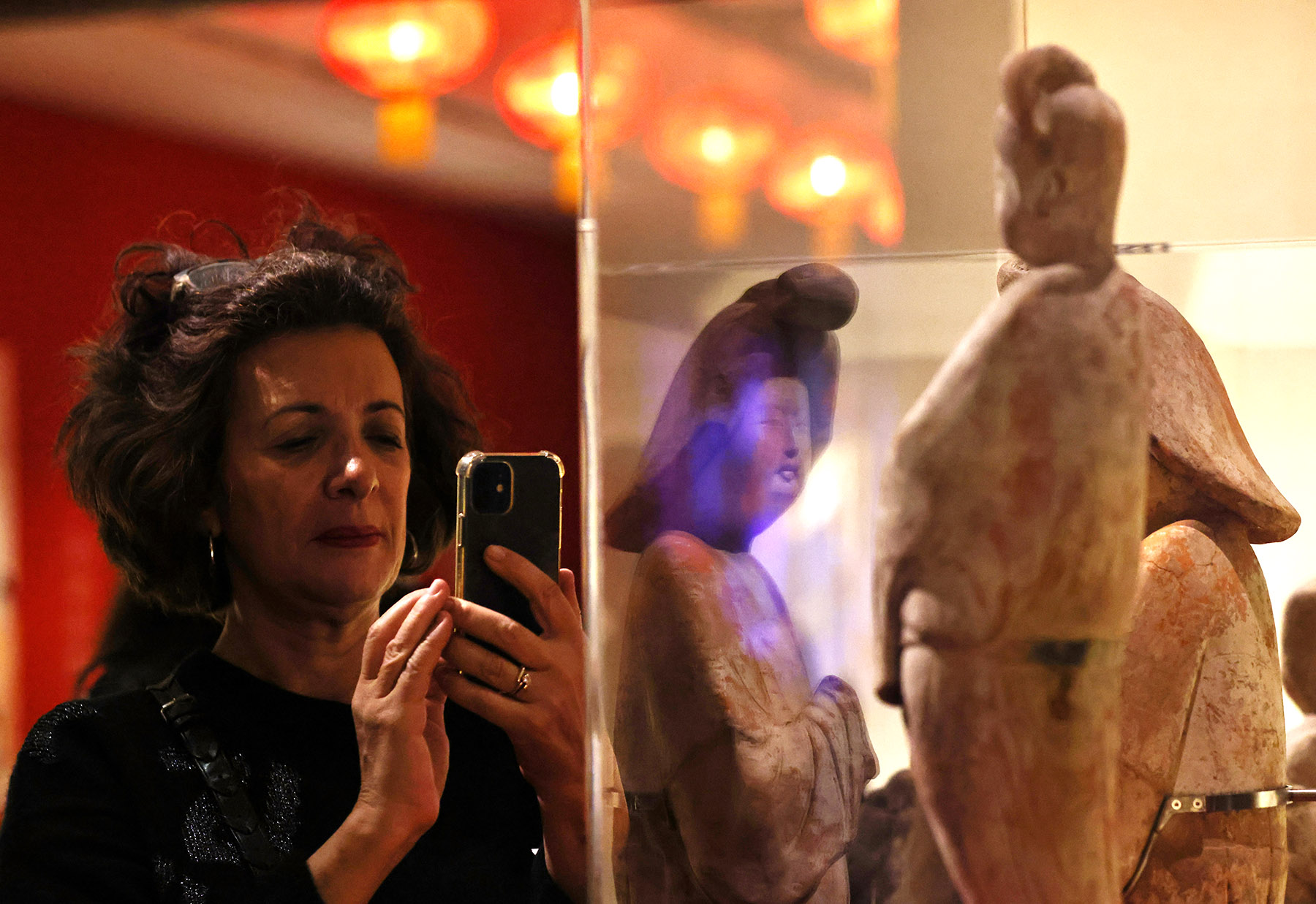
It's an important cultural activity to celebrate the 60th anniversary of diplomatic relations between China and France. President Xi Jinping and French President Emmanuel Macron have respectively written a preface to the show when it opened in late November.
Xi says that he believes the exhibition will help the French and other European audiences gain a more vivid understanding of the brilliant, open and confident atmosphere of the Tang Dynasty and experience the unique charm of Chinese civilization. Macron, for his part, says that the exhibition is of historic significance and demonstrates once again the vitality of cultural exchanges between the two countries, which will continue to play an important part in the development of bilateral ties.
The Guimet museum hopes the show can attract audiences of all ages, especially young people, sparking their interest in Chinese history. Tsao says some visitors told her that they still remember the grand show, 10 years ago, featuring Han Dynasty (206 BC-AD 220) artifacts also held at the museum.
It makes her believe that an excellent exhibition can inspire more Western people to become curious about Chinese civilization.
When the Han Dynasty show was held in 2014, Xi and then French President Francois Hollande also wrote a preface for the exhibition. Now, the Tang Dynasty show is a response and echo of the grand exhibition a decade ago.
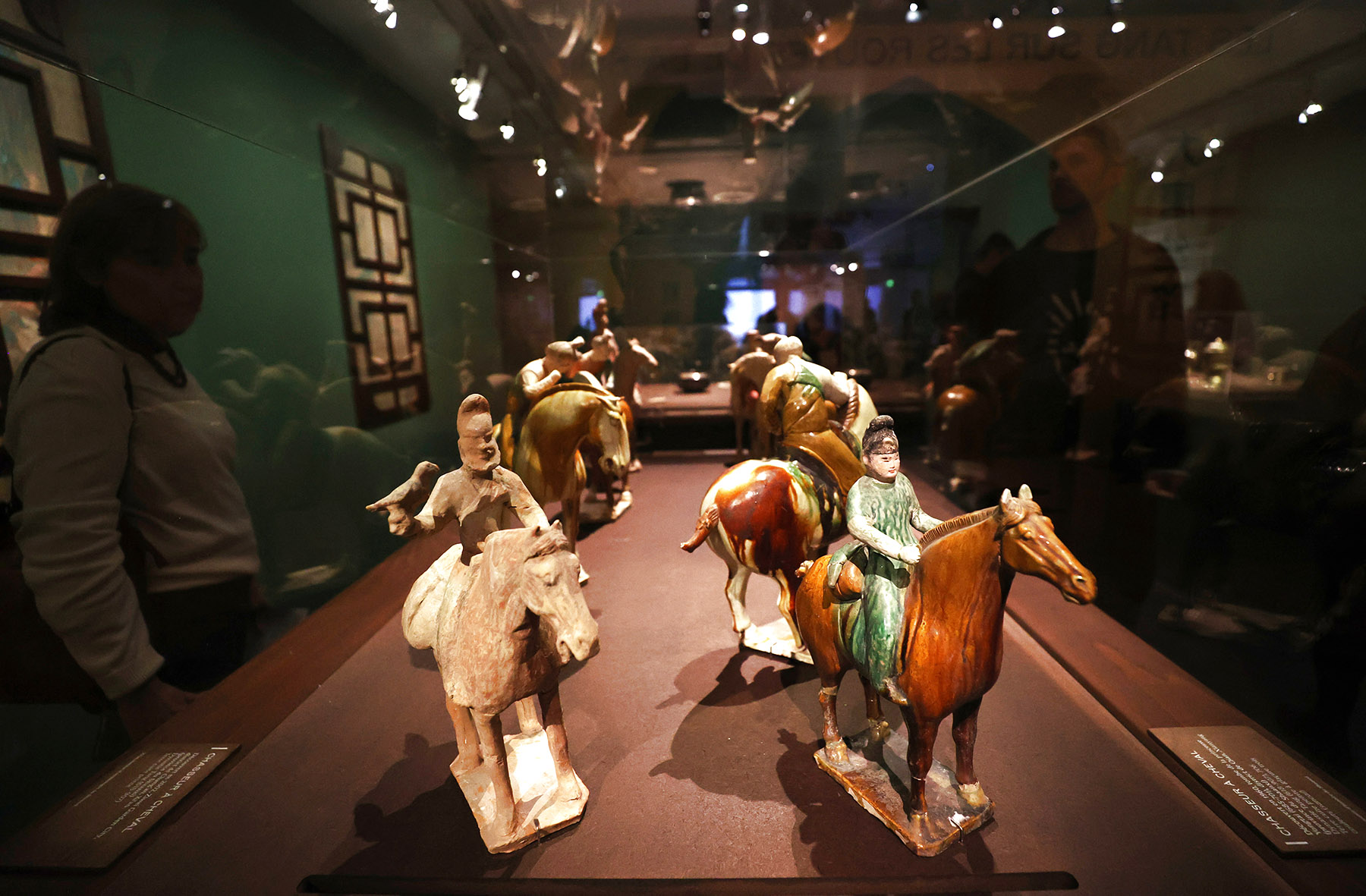
Luo Lijun, co-curator from Art Exhibitions China, says that the Han Dynasty show attracted more than 85,000 visitors in three months. This success gives them confidence to continue their cooperation with the Guimet museum for this year's exhibition.
Both exhibitions are co-organized by Art Exhibitions China, a governmental body that aims to promote Chinese cultural heritage overseas. Luo has been part of the curatorial team for both events.
"When starting our second collaboration, we and the Guimet museum coincidentally chose to introduce the Tang Dynasty to the French audience. Renowned as one of the most prosperous periods in Chinese history, the Tang Dynasty was marked by a vibrant economy, a thriving culture, intellectual openness, outstanding artistic accomplishments, and significant ethnic integration," says Luo.
In fact, the Guimet museum, dedicated to Asian art, has long been eager to host a large-scale exhibition to comprehensively showcase the Tang era, whose poetry, literature and calligraphy would go on to inspire some of the greatest literary works in later periods.
The museum has presented a total of four exhibitions spotlighting China's rich cultural heritage this year, with the Tang Dynasty show being the highlight of the year.
With an array of treasures set to be showcased outside China, Luo's team spent over a year preparing for the exhibition. The meticulous process involved selecting antiques, borrowing them from museums across China, and ultimately presenting them in a captivating manner to foreign audiences.
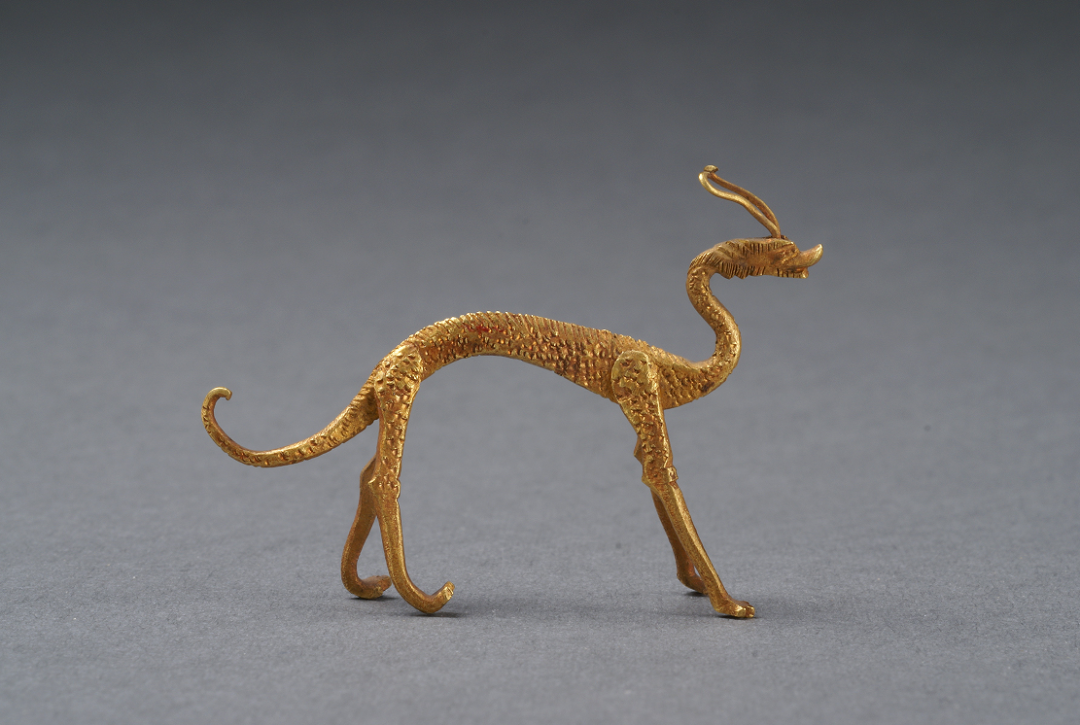
When choosing artifacts for overseas exhibitions, the first priority is to ensure they are not damaged. The items must be suitable for travel. They also need to captivate the audience. The selected artifacts should be well-known and important. Finally, it is crucial to showcase the latest archaeological findings, says Luo about their standards for antique selection.
The exhibition was divided into seven sections, including an immersive one that provides an overall picture of the Tang era.
Other sections focus on various aspects of this prosperous time, such as the architecture of the ancient capital of Chang'an (now Xi'an in Shaanxi province), daily life, ink painting art, craftsmanship of gold and silver wares, and the influence of the Silk Road.
In terms of architecture, it offers a map to show clearly the layout of the capital Chang'an, a then international hub, one of the most densely populated cities in the world. It boasted more than 1 million inhabitants. At its peak, the royal palace in Chang'an spread across about 3.2 square kilometers, or 3.5 times larger than the Forbidden City and 3 times the size of Versailles.
Visitors can immerse themselves in the vibrant life of the cosmopolitan era through captivating video displays of bustling street scenes and audio recordings of vendors hawking their wares, in addition to viewing the exquisite artifacts.
Gold and silver wares were highly popular in the Tang era with their craftsmanship reaching an unparalleled level of excellence.
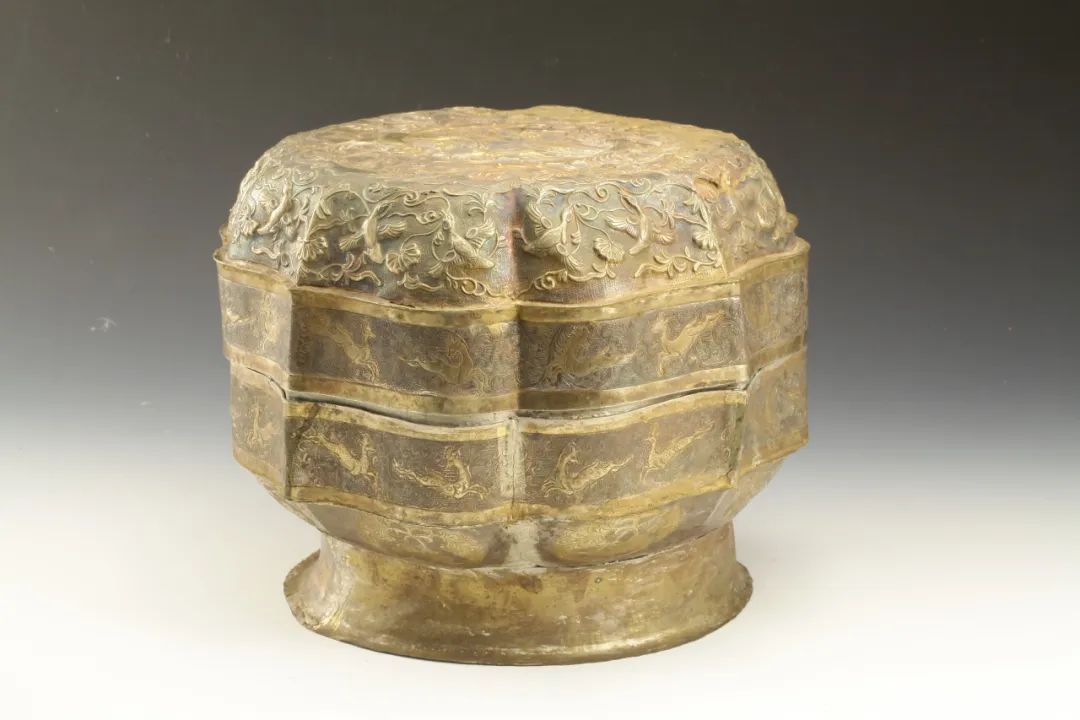
This exhibition brings together exquisite gold and silver artifacts unearthed from the Famen Temple in Baoji, Shaanxi, an important Buddhist temple for the royal families; the Hejia Village Hoard in Xi'an, which houses large quantities of gold and silver wares for the court; and the Dingmaoqiao Hoard in Zhenjiang, Jiangsu, a treasure trove for households. It marks the first time that artifacts from these three locations are being showcased together overseas.
For instance, the incense holder made from gilt silver is a spectacular piece, featuring four finely engraved paintings on its body to demonstrate interesting stories of Buddhism. It was discovered from the underground palace of Famen Temple and was used to contain incense, a common element of Buddhist rituals and would have been used during royal ceremonies.
A silver box from the Dingmaoqiao Hoard in Zhenjiang is engraved with eight pairs of flying geese, interspersed with entwined lotus patterns and fish roe designs, creating an exquisite masterpiece. The box is a must-see piece from the Zhenjiang Museum in Jiangsu province.
According to the museum's director Zhang Xiaojun, a total of 956 gold and silver artifacts were unearthed from the Dingmaoqiao Hoard, including wine vases, food containers, storage vessels, and tea sets, dating back to the latter half of the 9th century.
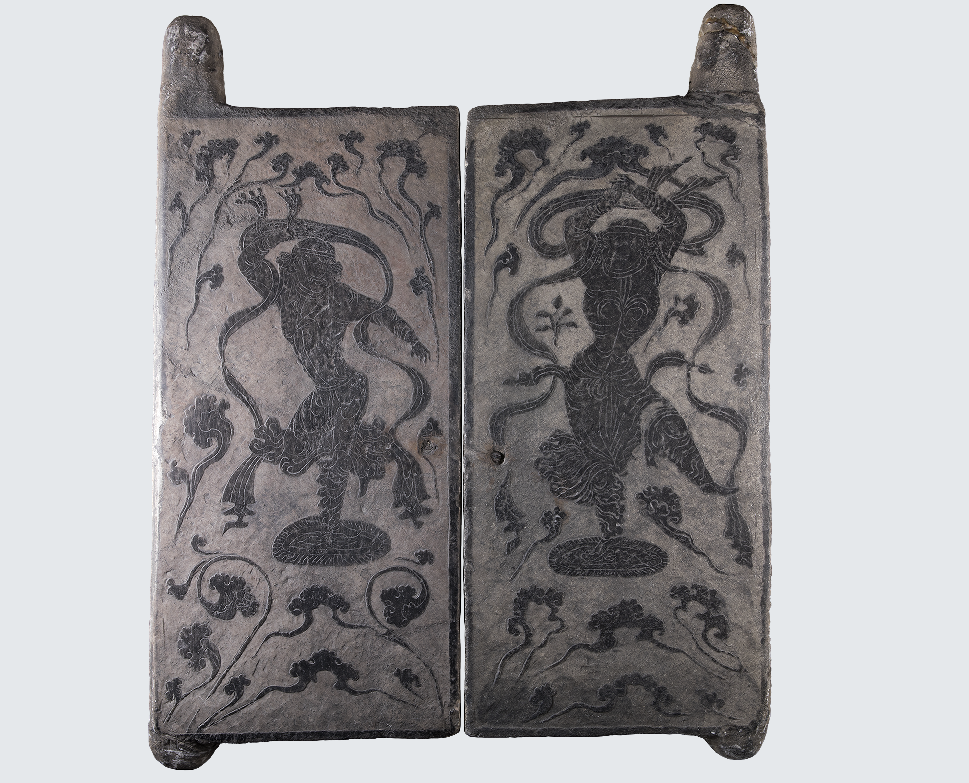
These artifacts demonstrate the open and inclusive tea and wine culture of the Tang Dynasty.
China has a long history of tea culture. Another highlight of the show is a set of Tang Dynasty three-color glazed tea wares from Henan province. It includes various tea utensils and a figurine of a seated tea brewer, representing the earliest known complete set used for grinding, boiling, serving, and drinking tea. Notably, the seated tea brewer figurine is a depiction of Lu Yu, the revered "Sage of Tea".
These tea wares were excavated from a tomb chamber measuring only 4 square meters, indicating that the tomb occupant, despite their modest social status, possessed such a comprehensive tea set. This suggests that by the Tang Dynasty, tea culture had spread from the imperial court to ordinary people.
Another star exhibit is a thumb-sized golden dragon discovered from the Hejia Village Hoard in Xi'an, what was Chang'an. With its dragon head held high and limbs outstretched, this ritual instrument used in Taoist ceremonies serves to connect heaven and earth, praying for peace and prosperity for the nation and its people.
During the height of the Tang era, many foreigners settled in China, with a significant number making their homes in Chang'an and engaging in various professions. Among them, many were dancers and musicians. In Tang Dynasty tomb figurines, depictions of foreigners frequently appear.
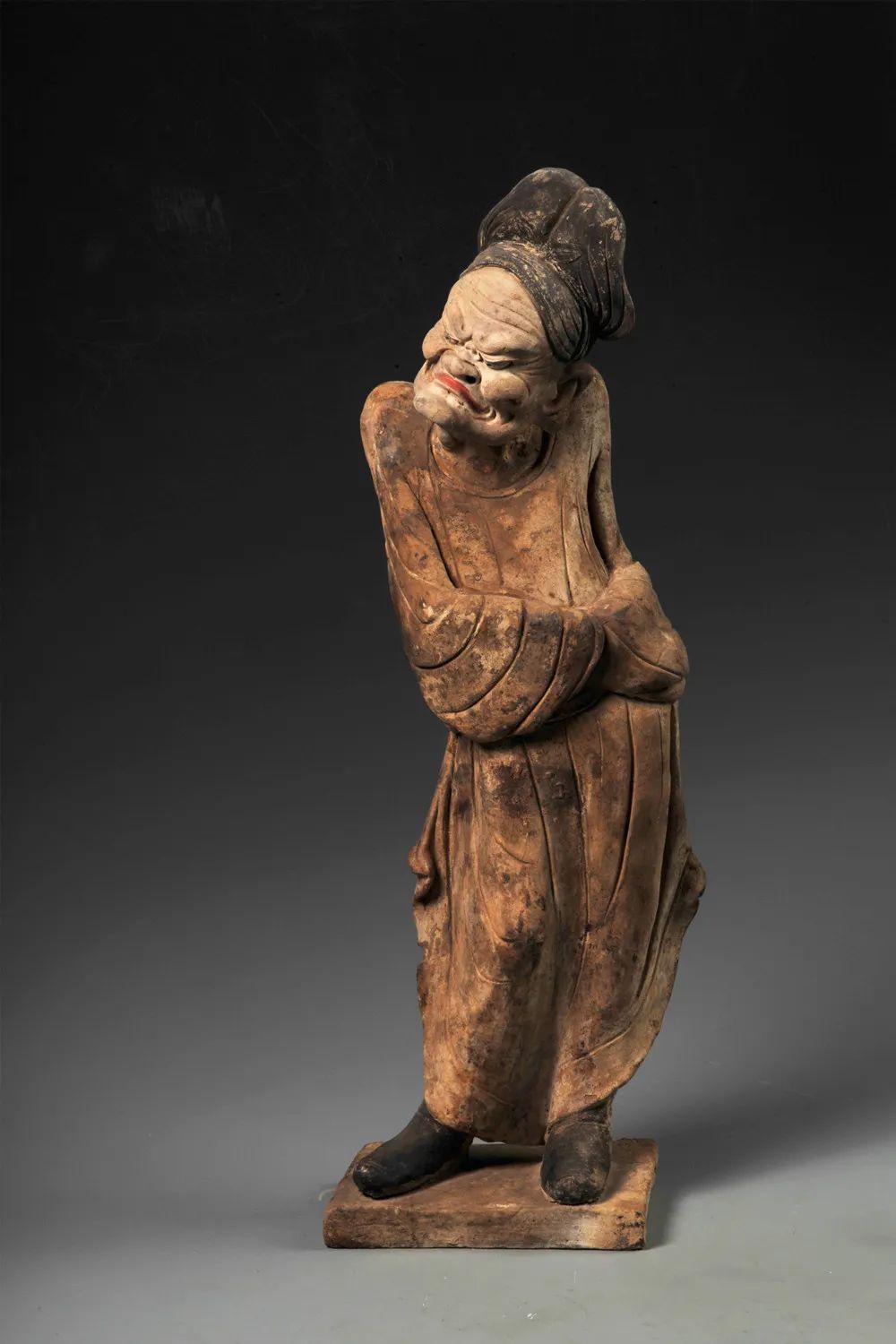
This phenomenon also attests to the cultural exchanges along the Silk Road. Some vividly sculpted figurines of such kind are also on display.
"Every exhibit is exquisite. If you look closely, you will find that each artifact actually holds a vivid story within. Our aim is to let the artifacts be ambassadors of our culture. They can tell good stories," says Luo.
ALSO READ: Memories of a master
Since the early 1970s, Art Exhibitions China that Luo works for has held 240 large-scale Chinese antique shows overseas in total. The shows outside China reached more than 60 countries and regions across five continents, attracting over 100 million visitors from both home and abroad.
Last year, they held a show focusing on antiques related to the nation and countries engaged in the Belt and Road Initiative in Japan. The touring show has received hundreds of thousands of visitors.
"Cultural relics carry historical heritage, inherit splendid civilization, and have become an important medium for promoting cultural exchange, mutual learning, and enhancing mutual understanding among people," Luo says.
Contact the writer at dengzhangyu@chinadaily.com.cn


